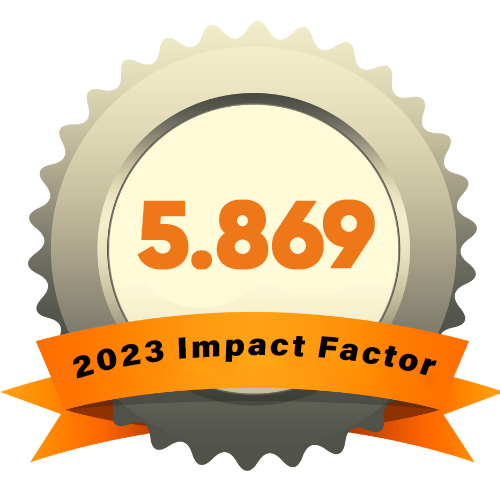ГИПЕРТЕНЗИЯ У ПОЖИЛЫХ
Аннотация
Гипертония у пожилых людей связана с неблагоприятными сердечно-сосудистыми исходами, такими как сердечная недостаточность, инсульт, инфаркт миокарда и смерть. Глобальное бремя гипертонии увеличивается из-за старения населения и растущей распространенности ожирения, и, по оценкам, к 2025 году оно затронет одну треть населения мира. Неблагоприятные последствия для пожилых людей усугубляются механическими гемодинамическими изменениями, жесткостью артерий, нейрогормональными и вегетативными нарушениями. нарушение регуляции и снижение функции почек. В этом обзоре освещаются текущие данные и обобщаются последние рекомендации по гипертонии, относящиеся к пожилым людям. Стратегии ведения гипертонии у пожилых людей должны учитывать степень слабости, все более сложные сопутствующие заболевания и психосоциальные факторы и, следовательно, должны быть индивидуализированы. Следует поощрять нефармакологические изменения образа жизни для снижения риска развития гипертонии, а также в качестве дополнительной терапии для снижения потребности в лекарствах. Фармакологическая терапия диуретиками, блокаторами ренин-ангиотензиновой системы и блокаторами кальциевых каналов показала положительный эффект на сердечно-сосудистые исходы у пожилых пациентов. Учитывая бремя гипертонии для экономики и общественного здравоохранения в США и во всем мире, крайне важно заняться изменением образа жизни молодого поколения, чтобы предотвратить гипертонию с возрастом.
Библиографические ссылки
United Nations, Department of Economic and Social Affairs, Population Division (2015). World Population Prospects: The 2015 Revision, Key Findings and Advance Tables. Working Paper No. ESA/P/WP.241United Nations (2015). World Population Prospects: The 2015 Revision.
The prevalence of high blood pressure among U.S. adults by age and sex. (Source: Heart Disease and Stroke Statistics–2020 Update: A report from the American Heart Association).
Lewington S, Clarke R, Qizilbash N, Peto R, Collins R; Prospective Studies Collaboration. Age-specific relevance of usual blood pressure to vascular mortality: a meta-analysis of individual data for one million adults in 61 prospective studies. Lancet. 2002;14;360(9349):1903–13.
Muntner P, Carey RM, Giddiong S, Jones DW, Taler SJ, Wright JT Jr, Whelton PK. Potential US population impact of the 2017 ACC/AHA high blood pressure guideline. Circulation. 2018;137:109–18.
Mills KT, Stefanescu A, He J. The global epidemiology of hypertension. Nat Rev Nephrol. 2020;16:223–37.
Beckett NS, Peter R, Fletcher AE, Staessen JA, Liu L, Dumtrascu D, Stayanovsky V, Antikainen RL, et al. for the HYVET Study Group. Treatment of hypertension in patients 80 years of age and older. NEJM. 2008;358:1887–1898.
Wright JT Jr., Williamson JD, Whelton PK, Snyder JK Sink KM, Rocco MV, Reboussin DM, Rahman M, Oparil S, Lewis CE. A randomized trial of intensive versus standard blood-pressure control: The SPRINT Research Group. N Engl J Med. 2015;373:2103–2116.
Williamson JD, Supiano MA, Applegate WB, Berlowitz DR, Campbell RC, Chertow GM, Fine LJ, Haley WE, et al. Intensive vs standard blood pressure control and cardiovascular disease outcomes in adults aged ≥75 years: A randomized clinical trial. JAMA. 2016;315:2673–82.
• Pajewski NM, Berlowitz DR, Bress AP, Callahan KE, Cheung AK, Fine LJ, Gaussoin SA, et al. Intensive vs. standard blood pressure control in adults 80 years or older: A secondary analysis of the Systolic Blood Pressure Intervention Trial. JAGS. 2020:68:496–504. Intensive vs. standard treatment in adults ≥80 years. This secondary analysis of SPRINT data assessed the association between cognitive performance and intensive (SBP goal <120) vs. standard (SBP goal 135–139) treatment of hypertension on the primary outcome of nonfatal myocardial infarction, stroke, and acute heart failure, and death from cardiovascular causes. Intensive treatment was beneficial in adults ≥80 years with cognitive performance ≥25th percentile (HR 0.40 [0.28–0.57]) but not those with lower scores (HR 1.33 [0.87–2.03]).
•• Zhang W, Zhang S, Deng Y, Wu S, Ren J, Sun G, Yang J, et al. Trial of intensive blood-pressure control in older adults with hypertension. NEJM. 2021;385:1268–1279. Intensive vs. standard treatment in adults 60 – 80 years. Among 8511 Chinese adults 60 – 80 years with hypertension randomized to intensive (systolic BP target 110─<130 for standard (systolic BP 130─<150) the primary outcome (similar to SPRINT) was reduced 26% (HR 0.75 [0.60–0.92]). The achieved systolic BP in the two respective groups was 127.5 vs 135.3.
Benetos A, Petrovic M, Strandberg T. Hypertension management in older and frail older patients. Circ Res. 2019;124:1045–60.
Whelton PK, Carey RM, Aronow WS, Case DE Jr, Collins KJ, Dennison-Himmelfarb C, DePalma SM, Gidding S, Jamerson JA, Jones DW, et al. 2017 ACC/AHA Guideline for the prevention, detection, evaluation, and management of high blood pressure in adults. Hypertension. 2018;71:e13–115.
•• Mancia G, Kreutz R, Brunström M, Burner M, Grassi G, Januszewicz A, Muisan ML, et al. 2023 ESH Guideline for the management of arterial hypertension. The TASK Force for the management of arterial hypertension of the European Society of Hypertension endorsed by the International Society of Hypertension (ISH) and the European Renal Association (ERA). J Hypertension. 2023.
Rockwood K, Song X, MacKnight C, Bergman H, Hogan DB, McDowell I, Mitnitski A. A global clinical measure of fitness and frailty in elderly people. CMAJ. 2005;173:489–95.
Pajewski NM, Williamson JD, Applegate WB, Berlowitz DR, Bolin LP, Chertow GM, Krousel-Wood MA, et al. Characterizing frailty status in the systolic blood pressure intervention trial. J Gerontol. 2016;71:649–655. Geriatric Medicine Research, Dalhousie University, HLIFAX, Canada: http://geriatricresearch.medicine.dal.ca/clinical_frailty_scale.htm.
World Population Ageing 2020 Highlights. United Nations: Department of Economic and Social Affairs, October 2020. https://www.un.org/development/desa/pd/sites/www.un.org.development.desa.pd/files/files/documents/2020/Sep/un_pop_2020_pf_ageing_10_key_messages.pdf. Accessed 27 Sep 2023.
Osude N, Durzao-Arvizu R, Markossian T, Liu K, Michos ED, Rakotz M, Wozniak G, Egan BM, Kramer H. Age and sex disparities in hypertension control: The multi-ethnic study of atherosclerosis (MESA). Am J Prev Cardiol. 2021;8:100230.
Muntner P, Miles M, Jaeger B, Hannon L, Hardy S, Ostchega Y, Wozniak G, Schwartz J. Blood pressure control among US adults, 2009 to 2012 through 2017 to 2020. Hypertension. 2022;79:1971–80.
Franklin SS, Gustin W 4th, Wong ND, et al. Hemodynamic patterns of age-related changes in blood pressure. The Framingham Heart Study Circulation. 1997;96:308.
Chapman N, Ching SM, Konrad AO, Nuyt AM, Khan T, Twumasi-Ankrah B, Cho EJ, et al. Arterial hypertension in women: State of the art and knowledge gaps. Hypertension. 2023;80:1140–9.
Sorkin JD, Muller DC, Andres R. Longitudinal change in height of men and women: Implications for interpretation of the body mass index. Am J Epidemiol. 1999;150:969–77.
Komutrattananont P, Mahakkanukrah P Das S. Morphology of the human aorta and age-related changes: anatomical facts. Anat Cell Biol. 2019;52:109–114.
Ciuricӑ S, Lopez-Sublet M, Loeys BL, Radhouani I, Natarajan N, Vikkula M, Maas AHEM, Adlam D, Persu A. Arterial tortuosity: Novel implications for an old phenotype – Brief review. Hypertension. 2019;73:951–60.
Egan BM, Li J, Qanungo S, Wolfman TE. Blood pressure and cholesterol control in hypertensive hypercholesterolemic patients: A report from NHANES 1988–2010. Circulation. 2013;128:29–41.
Thompoulos C. Do really statins reduce blood pressure? Editorial commentary J Hypertension. 2020;38:408–11.
Zhou Y-F, Wang Y, Wang G, Zhou Z, Chen S, Geng T, Zhang Y-B, Wang Y, Chen J-X, P:an A, Wu S. Association between statin use and progression of arterial stiffness among adults with high atherosclerotic risk. JAMA Open. 2022;5:e2218323.
Egan BM, Sutherland SE, Tilkemeier PL, Davis RA, Rutledge V, Sinopoli A. A cluster-based approach for integrating clinical management of Medicare beneficiaries with multiple chronic conditions. PLoS ONE. 2019;14(6):e0217696.
Brown GC. Living too long. EMBO Rep. 2015;16:137–41.
DiMilia PR, Mittman A, Batsis JA. Benefit-to-risk balance of weight loss interventions in older adults with obesity. Curr Diab Rep. 2020;19:114.
Knoops KTB de Groot LCPGM, Kromhout D, Perrin A-E, Morciras-Varela O, Menotti A, van Staveren WA. Mediterranean diet, lifestyle factors, and 10-year mortality in elderly European men and women: The HALE Project. JAMA. 2004;292:1433–1439.
Weinberger MH, Fineberg NS. Sodium and volume sensitivity of blood pressure: Age and pressure change over time. Hypertension. 1991;18:67–71.
Whelton PK, Appel LJ, Espeland MA, Applegate WB, Ettinger WH, Kostis JB, Kumanyika S, Lacy CR, Johnson KC, Folmar S, Cutler JA. Sodium reduction and weight loss in the treatment of hypertension in older persons: A randomized control trials of nonpharmacologic interventions in the elderly (TONE). JAMA. 1998;279:839–46.
Appel LJ, Espeland MA, Easter L, Wilson AC, Folmar S, Lacy CR. Effects of reduced sodium intake on hypertension control in older individuals: Results from the trial of nonpharmacololgic interventions in the elderly (TONE). Arch Intern Med. 2001;161:685–93.
Jennings A, Beredsen AM, de Groot LCPGM, Feskens EJM, Brzozowski A, Sicinska E, Petruszka B, et al. Mediterranean-style diet improves systolic blood pressure and arterial stiffness in olde adults: Results of a 1-year European multi-center trial. Hypertension. 2019;73:578–586.
Kazeminia M, Daneshkah A, Jalali R, Vaisi-Raygani A, Salari N, Mohammadi M. The effect of exercise on older adult’s blood pressure suffering hypertension: Systematic review and meta-analysis on clinical trial studies. Int J Hypertension. 2020;2786120.
Dempsey PC, Sacre JW, Larsen RN, Straznicky NE, Sethi P, Cohen ND, Cerin E, Lambert GW, Owen N, Kingwell BA, Dunstan DW. Interrupting prolonged sitting with brief bouts of light walking or simple resistance activities reduces resting blood pressure and plasma noradrenaline in type 2 diabetes. J Hypertension. 2016;34:2376–82.
Egan BM. Are there cardiometabolic benefits of low-intensity physical activity in at-risk adults? JASH. 2018;12:69–70.
Bellows BK, Ruiz-Negrón N, Bibbins-Domingo K, King JB, Pletcher MJ, Moran AE, Fontil V. Clinic-based strategies to reach United States million hearts 2022 blood pressure control goals. Circ Cardiovasc Qual Outcomes. 2019;12:e005624.
Rea F, Corrao G, Merlino L, Mancia G. Initial antihypertensive treatment strategies and therapeutic inertia: Evidence from a large population-based cohort. Hypertension. 2018;72:846–53.
Feldman RD, Zou GZ, Vandervoort MK, et al. A simplified approach to the treatment of uncomplicated hypertension: a cluster randomized, controlled trial. Hypertension. 2009;53(4):646–53.
Egan BM, Bandyopadhyay D, Shaftman SR, et al. Initial monotherapy and combination therapy and hypertension control in the first year. Hypertension. 2012;59(6):1124–31.
Mancia G, Rea F, Corrao G, et al. Two-drug combinations as first-step antihypertensive treatment. Circ Res. 2019;124(7):1113–23.
Egan BM. Editorial commentary: Prognostic value of blood pressure control delay in newly diagnosed hypertensive patients. J Hypertension. 2019;37:290–1.
Law MR, Wald NJ, Morris JK, Jordan RE. Value of low dose combination treatment with blood pressure lowering drugs: analysis of 354 randomised trials. BMJ. 2003;326:1427.
Sturgeon KM, Deng L, Bluethmann SM, Zhou S, Trifeletti DM, Jian C, Kelly SP, Zaorsky NG. A population-based study of cardiovascular disease mortality risk in US cancer patients. Eur Heart J. 2019;40:3889–97.
Lennon MJ, Lam BCP, Lipnicki DM, Crawford JD, Peters R, Schutte AE, Brodaty H, et al. Use of antihypertensives, blood pressure, and estimated risk of dementia in later life. An individual participant data meta-analysis. JAMA Open. 2023;6:e233353.
Lin S-F, Beck AN, Finch BK, Hummer RA, Master RK. Trends in US older adult disability: Exploring age, period and cohort effects. Am J Public Health. 2023;102:2157–63.
UT Sadikov, SS Bobojonov, MM Yusupova, AM Boltabaev, KA Nizomova Hyperuricemia as a risk factor for arterial hypertension among the population of the Fergana region of the Republic of Uzbekistan.
СС Бобожонов Состояние гигиены полости рта у лиц с сердечно-сосудистыми заболеваниями и сопутствующими факторами риска.
С С Бобожонов, З И Лочинова Использования современных интерактивных методов преподавания в ферганском медицинском институте общественного здоровья.
С.С Бобожонов Симуляционные технологии в подготовке врачей-общей практики с учетом требований профессионального стандарта.
С.С Бобожонов Характеристика коморбидности кардиологических больных в условиях многопрофильного стационара.
С.С Бобожонов Коморбидная патология в кардиологической практике.












